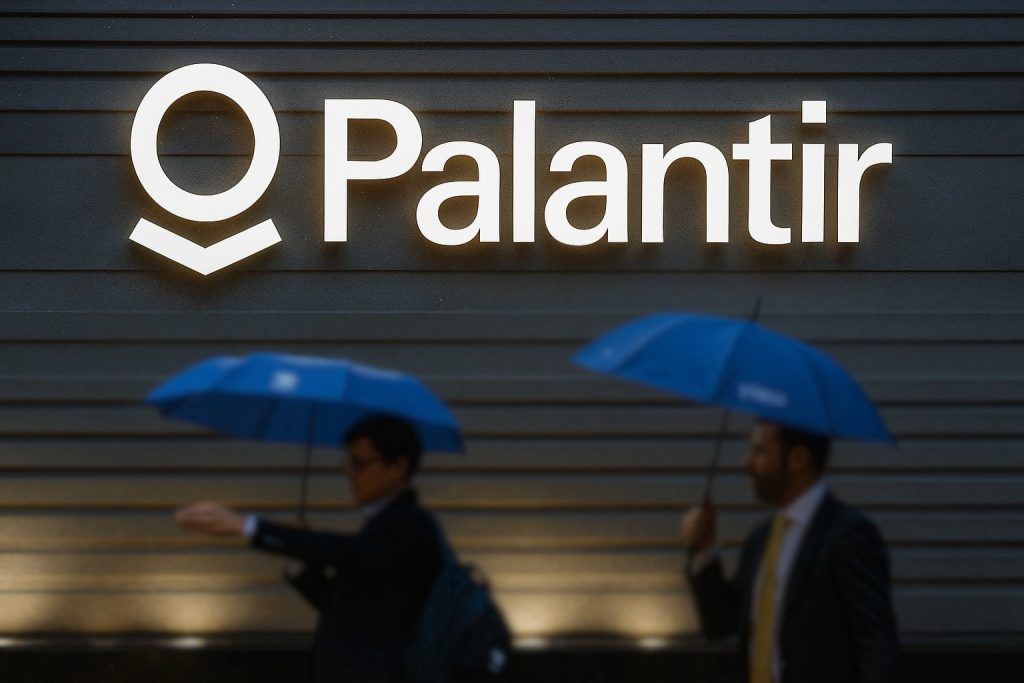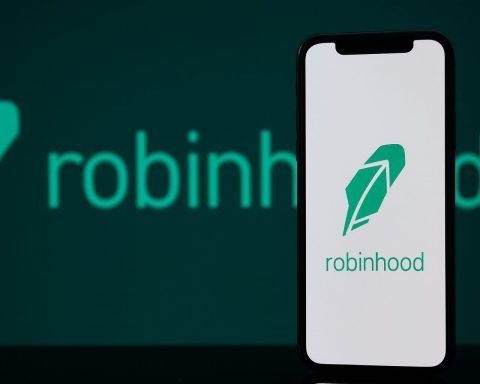Published: November 21, 2025
Netflix (NASDAQ: NFLX) shares are ending a very eventful week in relatively calm fashion — at least on the surface. Underneath today’s flat price action sits a powerful mix of catalysts: a fresh 10‑for‑1 stock split, a potential bid for Warner Bros. Discovery’s studio and streaming assets, new political trading disclosures, and lingering reactions to October’s earnings.
As of late afternoon on Friday, November 21, 2025, Netflix stock is trading around $105.55, fractionally below Thursday’s close of $105.67. Intraday, the stock has moved in a range of roughly $104.49 to $106.44, on lighter volume than earlier in the week. [1]
That price leaves NFLX about 29% above its 12‑month low of $82.11 and roughly 21% below its 12‑month high of $134.12, keeping the stock in the middle of its one‑year trading band. [2]
Below is a breakdown of the key Netflix stock news and drivers specifically for today, November 21, 2025, and how they fit into the broader 2025 story.
Netflix stock price today: a quiet session after a wild post‑split week
- Last price: about $105.55
- Day change: essentially flat vs. Thursday’s close of $105.67
- Intraday range: about $104.49 – $106.44
- Volume: just under 9 million shares, lighter than the roughly 40 million average daily volume cited earlier this week. [3]
Today’s muted move comes after several brisk sessions:
- On Wednesday, November 19, Netflix fell around 3.6% intraday after Barclays cut its price target to $110 and maintained an equal‑weight rating, sending the stock as low as $108.61 before it stabilized near $110. [4]
- Earlier in the week, Netflix shares were also under pressure as investors reacted to headlines about a potential bid for Warner Bros. Discovery’s studio and streaming operations. [5]
Zooming out, Zacks Investment Research estimates that Netflix shares are up roughly 25–26% year‑to‑date, significantly outperforming many media peers and the broader market despite the recent pullback. [6]
In other words: the stock is cooling off after a big run and a heavily publicised stock split — but the story is far from over.
Today’s biggest driver: Netflix joins the bidding for Warner Bros. Discovery assets
The most market‑moving headline for Netflix shareholders today is the confirmation that Netflix has submitted a preliminary bid for parts of Warner Bros. Discovery (WBD).
What Reuters is reporting today
A Reuters report today confirms that Warner Bros. Discovery has received first‑round buyout bids from Paramount Skydance, Comcast and Netflix, kicking off what could be one of the most consequential media deals of the decade. [7]
Key points from that coverage:
- Paramount Skydance is reportedly interested in acquiring the entire Warner Bros. Discovery group, including cable networks. [8]
- Comcast is said to be focused on Warner Bros.’ film and TV studios and HBO, which would strengthen both its streaming and theme‑park businesses. [9]
- Netflix, by contrast, is targeting the studio and streaming assets, aiming to secure Warner Bros.’ vast film library and major franchises such as Harry Potter, DC Comics titles and The Lord of the Rings. [10]
Warner Bros. Discovery has already outlined a plan to split into two publicly traded companies, separating its studio/streaming operations from fading cable networks — a structure that makes it easier to sell the crown‑jewel assets that Netflix is reportedly eyeing. [11]
Why this matters for NFLX
This potential deal is rattling Netflix’s stock for several reasons:
- Balance sheet and spending concerns
Investors worry that a large, mostly cash or cash‑and‑stock deal could pressure Netflix’s balance sheet or slow the pace of share buybacks, even as the company has been generating stronger free cash flow. [12] - Regulatory risk
Analysts quoted by Investing.com highlight the possibility of tougher regulatory scrutiny on Netflix than on traditional media incumbents, given its dominance in streaming. [13] - Integration complexity
Warner Bros.’ studio and HBO businesses have their own cultures, theatrical expectations and legacy licensing deals. Changes to theatrical windows, or shifting more content to Netflix‑first, could weigh on Warner Bros.’ earnings in the short term. [14]
Netflix’s message to Hollywood today: theatres stay open
In a separate report this morning, Variety says Netflix has promised Warner Bros. that it will keep releasing Warner Bros. films in cinemas if it wins the deal, honoring existing theatrical agreements rather than immediately pulling everything into a streaming‑only model. [15]
This is a notable shift in tone from a company whose co‑CEO Ted Sarandos has previously referred to traditional theatrical moviegoing as “an outdated concept,” and which historically only gave its own movies limited theatrical runs. [16]
For investors, that promise suggests three things:
- Netflix is willing to adapt its distribution philosophy to secure high‑value IP.
- Management recognises the political and cultural sensitivity of gutting a legacy studio’s theatrical slate.
- Any acquisition would likely keep Warner Bros. as a distinct production brand, at least for the medium term, rather than folding everything into a pure‑streaming machine overnight.
All of this adds strategic potential — but also risk — to the Netflix stock story in the months ahead.
Political money flows: Congressman Cleo Fields buys more Netflix as another lawmaker sells
Another strand of today’s news flow involves U.S. congressional trading disclosures — not because they should drive your investment decisions, but because they show where politically connected investors are placing sizable bets.
Cleo Fields: multiple six‑figure Netflix buys
A fresh MarketBeat report today shows Representative Cleo Fields (D‑Louisiana) disclosed buying between $100,001 and $250,000 of Netflix stock on November 3, with the filing made public on November 19. [17]
Additional filings and analysis from Benzinga’s government trading tracker indicate that:
- Fields also disclosed another $100,000–$250,000 Netflix purchase on October 31, plus earlier large buys in Nvidia, Apple, Alphabet and other mega‑cap tech names. [18]
- In total, disclosures suggest roughly $300,000 to $750,000 in Netflix purchases in less than a month. [19]
The MarketBeat piece also reiterates that analysts, on average, rate Netflix a “Moderate Buy” with an average price target around $133.93, well above today’s ~$105 level. [20]
Gilbert Ray Cisneros: selling Netflix into strength
In contrast, another MarketBeat “instant alert” out today notes that Rep. Gilbert Ray Cisneros Jr. (D‑California) has recently sold Netflix shares, even as many Wall Street analysts remain positive on the stock. [21]
While individual congressional trades shouldn’t be seen as definitive buy or sell signals, the combination of heavy buying by one member of Congress and selling by another underscores how divisive Netflix’s current risk/reward profile looks — even among sophisticated investors.
Q3 2025 earnings: strong results, one‑off tax hit and a big free‑cash‑flow boost
Beneath the near‑term volatility, Netflix’s fundamentals remain central to the investment case — and they were on full display in the Q3 2025 shareholder letter released on October 21. [22]
Headline numbers
For the quarter ended September 30, 2025, Netflix reported: [23]
- Revenue: $11.51 billion, up about 17% year‑over‑year
- Operating income: $3.25 billion
- Operating margin:28.2%, versus 29.6% a year earlier
- Net income: about $2.55 billion
- Diluted EPS:$5.87, compared with $5.40 a year ago
- Free cash flow: around $2.66 billion for the quarter
Management also raised its full‑year 2025 free‑cash‑flow outlook to roughly $9 billion, up from a previous forecast of $8–8.5 billion. The increase reflects lower‑than‑expected content spending and the timing of cash payments. [24]
The Brazilian tax dispute
One wrinkle in the Q3 numbers was an approximately $619 million expense related to an ongoing non‑income tax dispute in Brazil, which dragged operating margin below Netflix’s prior guidance of 31.5%. Management emphasised that they do not expect this matter to materially affect future results. [25]
How Wall Street saw the quarter
Different research shops framed the earnings a bit differently:
- MarketBeat and other outlets describe a large EPS beat vs. earlier consensus estimates, with revenue slightly below some analysts’ models. [26]
- Zacks, in a detailed post‑split write‑up reissued today, classifies Netflix as a Zacks Rank #3 (Hold), noting that its 2025 earnings estimate has ticked down in recent weeks, even as management raises free‑cash‑flow guidance. [27]
In practice, the takeaway is more nuanced: Netflix continues to grow revenue in the mid‑teens, expand its ad‑supported tier, and generate robust cash, but the bar for earnings beats has risen — and any perceived slowdown or one‑off cost is now scrutinised more heavily given the stock’s strong multi‑year run.
How Netflix’s 10‑for‑1 stock split is changing the conversation
Another major storyline culminating this week is the company’s 10‑for‑1 stock split, which officially took effect at the market open on November 17, 2025. [28]
The mechanics
According to Netflix’s own press release and subsequent coverage:
- The board approved a 10‑for‑1 forward split on October 30, 2025. [29]
- Shareholders of record as of November 10 received nine additional shares for every one share held, with the new shares credited after the close on November 14. [30]
- Split‑adjusted trading began on November 17, taking the stock from roughly $1,100+ per share to about $110 without changing each investor’s total economic stake. [31]
Zacks’ deep dive reissued this morning emphasises that Netflix executed the split to make shares more accessible to retail investors, particularly those who prefer owning whole shares rather than fractions. [32]
Why did the stock fall after the split?
Counter to the intuitive “split equals rally” narrative, Netflix shares have actually been down modestly since split‑adjusted trading began.
- The Motley Fool notes that on November 17, the day the split took effect, Netflix fell about 0.8%, roughly in line with similar declines in the Nasdaq Composite and S&P 500 — suggesting the move had more to do with broader market weakness than the split itself. [33]
- Zacks highlights that even after the pullback, Netflix is still up strongly year‑to‑date, which may simply mean the stock is consolidating gains while investors digest both the split and the Warner Bros. headlines. [34]
Other commentary — including pieces on Nasdaq and investing blogs — stresses the classic point that stock splits do not change underlying value, only the number of shares and the sticker price. [35]
In short: the split is optics and accessibility, not a change to the business. But optics matter, and today’s ~$105 per‑share price simply feels different than $1,050 did, which can influence short‑term sentiment.
Analyst sentiment: target cuts, cautious upgrades and a wide valuation range
With Netflix now sitting in the low‑$100s, analysts are recalibrating their models — and their messages.
Target cuts and downgrades this week
Recent moves include:
- Barclays cutting its price target to $110 and reaffirming an equal‑weight rating, a note that coincided with Wednesday’s 3.6% intraday drop. [36]
- Erste Group downgrading Netflix from Buy to Hold late last month, citing a slightly reduced full‑year operating margin outlook and questions about valuation after the run‑up into earnings. [37]
Still a “Moderate Buy” on average
Despite those cautious moves, data compiled by MarketBeat and other aggregators show: [38]
- A broad “Moderate Buy” consensus across dozens of analysts
- A pre‑split average price target around $1,280–$1,320, which translates to roughly $128–$132 on a split‑adjusted basis
- A wide range, from a low target near $1,100 ($110 split‑adjusted) to a high around $1,600 (~$160 split‑adjusted)
Some houses, such as KGI Securities and Argus, have reiterated or initiated “outperform” or “buy” ratings with targets in the equivalent of the $130–$150 post‑split range, while others like JPMorgan are staying neutral with more conservative numbers. [39]
The bottom line: Wall Street still broadly likes Netflix, but enthusiasm is tempered by valuation, M&A uncertainty and a more competitive streaming landscape.
What it all means for Netflix investors right now
Putting all of today’s moving pieces together, Netflix’s investment narrative on November 21, 2025 looks something like this:
- Fundamentals remain strong
Netflix continues to grow revenue at a high‑teens pace, generate billions in free cash flow, and expand globally across scripted series, films, games, live events and advertising. [40] - The Warner Bros. Discovery bid introduces new upside and risk
Winning WBD’s studio and streaming assets could turbocharge Netflix’s IP library and theatre presence — but would likely require major capital, complex integration and regulatory approvals, all of which could pressure the stock in the near term. [41] - The 10‑for‑1 stock split is mostly cosmetic, but important for accessibility
At roughly $105 per share, Netflix is now more approachable for smaller accounts and some employee plans, which management hopes will broaden its shareholder base over time. [42] - Sentiment is mixed and volatility is likely
Target cuts from Barclays and others, combined with insiders taking profits and differing political trades, show that not everyone sees Netflix as a slam‑dunk at these levels. [43] - Valuation and time horizon are key
With the stock trading well below the split‑adjusted analyst average target but still up substantially over the past year, the question for investors is less “Is Netflix broken?” and more “How much execution and M&A risk am I willing to accept for potential long‑term upside?”
Important reminder
Nothing in this article is personalised investment advice. Netflix is a volatile large‑cap growth stock with significant competitive, regulatory and execution risks. Before buying or selling NFLX, consider:
- Your investment horizon (short‑term trade vs. multi‑year holding)
- Your risk tolerance, especially around big M&A and cyclical ad revenue
- The role you want streaming and media exposure to play in your broader portfolio
Always cross‑check real‑time prices and news with your broker or a trusted financial data provider before making trading decisions.
References
1. www.macrotrends.net, 2. www.marketbeat.com, 3. www.marketbeat.com, 4. www.marketbeat.com, 5. www.investing.com, 6. www.nasdaq.com, 7. www.reuters.com, 8. www.reuters.com, 9. www.reuters.com, 10. www.reuters.com, 11. www.reuters.com, 12. static.poder360.com.br, 13. www.investing.com, 14. www.investing.com, 15. au.variety.com, 16. au.variety.com, 17. www.marketbeat.com, 18. www.marketbeat.com, 19. www.benzinga.com, 20. www.marketbeat.com, 21. www.marketbeat.com, 22. static.poder360.com.br, 23. static.poder360.com.br, 24. static.poder360.com.br, 25. static.poder360.com.br, 26. www.marketbeat.com, 27. www.nasdaq.com, 28. ir.netflix.net, 29. ir.netflix.net, 30. ir.netflix.net, 31. www.nasdaq.com, 32. www.nasdaq.com, 33. www.nasdaq.com, 34. www.nasdaq.com, 35. www.nasdaq.com, 36. www.marketbeat.com, 37. www.investing.com, 38. www.marketbeat.com, 39. www.marketbeat.com, 40. static.poder360.com.br, 41. www.reuters.com, 42. ir.netflix.net, 43. www.marketbeat.com










